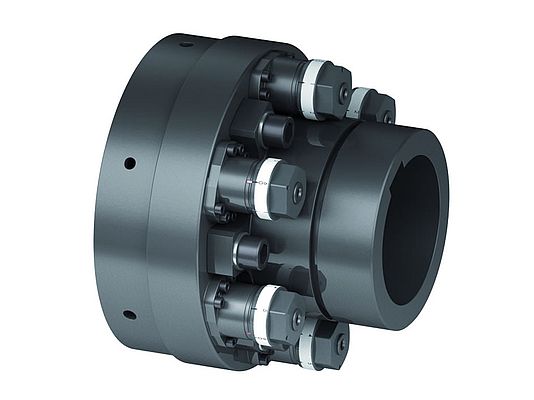In daily operation, high-performance heavy-duty gears have to continuously withstand huge loads. In case of a machine breakdown caused by overload, the owners are confronted with high costs due to expensive spare parts and costly downtimes. With the GWS series, RINGFEDER POWER TRANSMISSION has introduced a new range of safety couplings from the GERWAH product segment, custom-built for heavy-duty needs. Depending on the model size, up to twelve standardized switching units are located on the outer ring of the coupling, ensuring a backlash-free connection and reliable torque transmission between input and output side. This allows a high level of flexibility in terms of disengagement torque as well as coupling size and design. The working principle of the couplings is based on a spring-loaded ball-in-detent arrangement. When the coupling is engaged, the steel balls located within the switching units are forced into a conical detent by spring pressure. If, in an overload case, the disengagement torque preset on the switching units is exceeded, the steel balls move out of their detent in axial direction, causing a stable separation of input and output side, thereby interrupting the torque transmission. With a few steps, the overload coupling can be returned to operating mode so that the corresponding device or machine will be up and running within short time. Changing the preset disengagement torque requires only a few simple steps, without having to dismount the coupling.
In order to meet different user requirements, the company offers three models of its heavy-duty couplings. In addition to a coupling model with flange-hub and keyway-hub (GWS 5420), the portfolio includes a flexible coupling (GWS 5421) and a rigid disc coupling (GWS 5422), both with keyway-hubs on the input and the output side. Optionally, the couplings can be equipped with a switching disc and a mechanical limit switch on the motor side. The switch signals generated by these mechanisms can be used to switch off the drive and to send out an acoustical or optical signal.

















